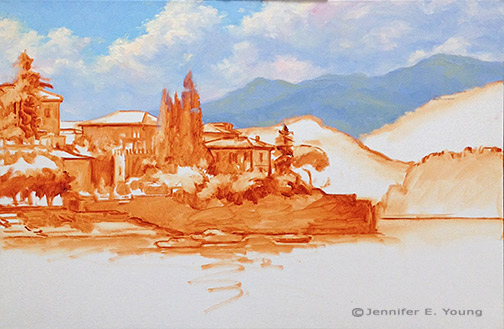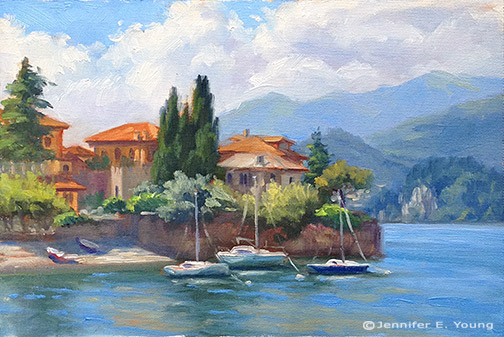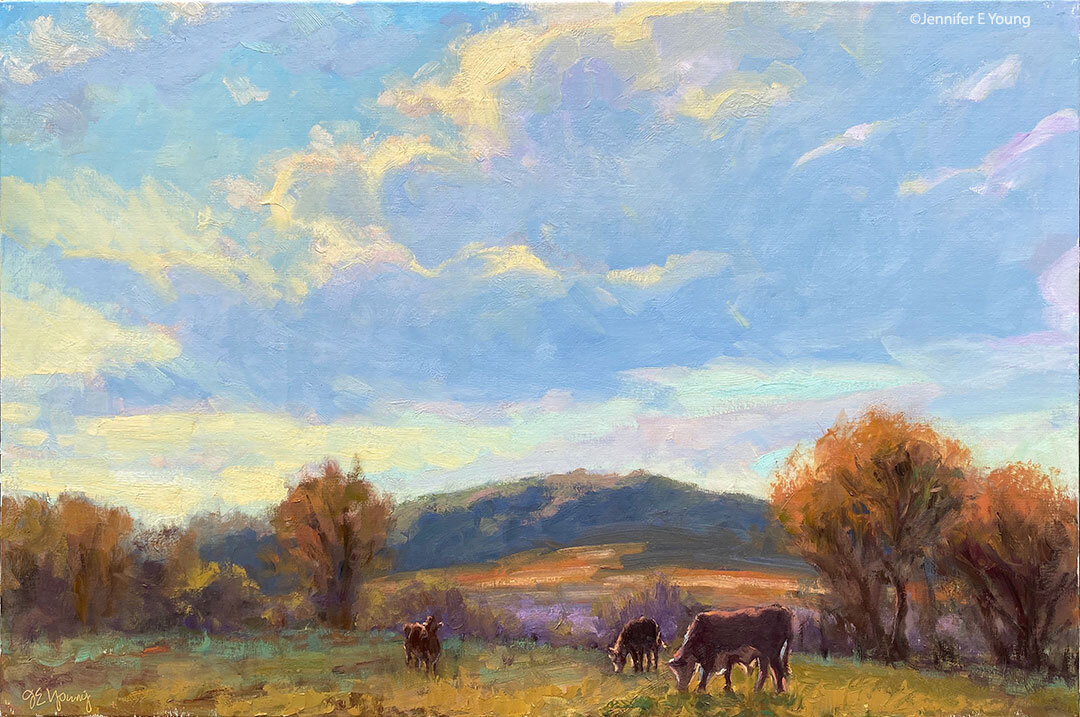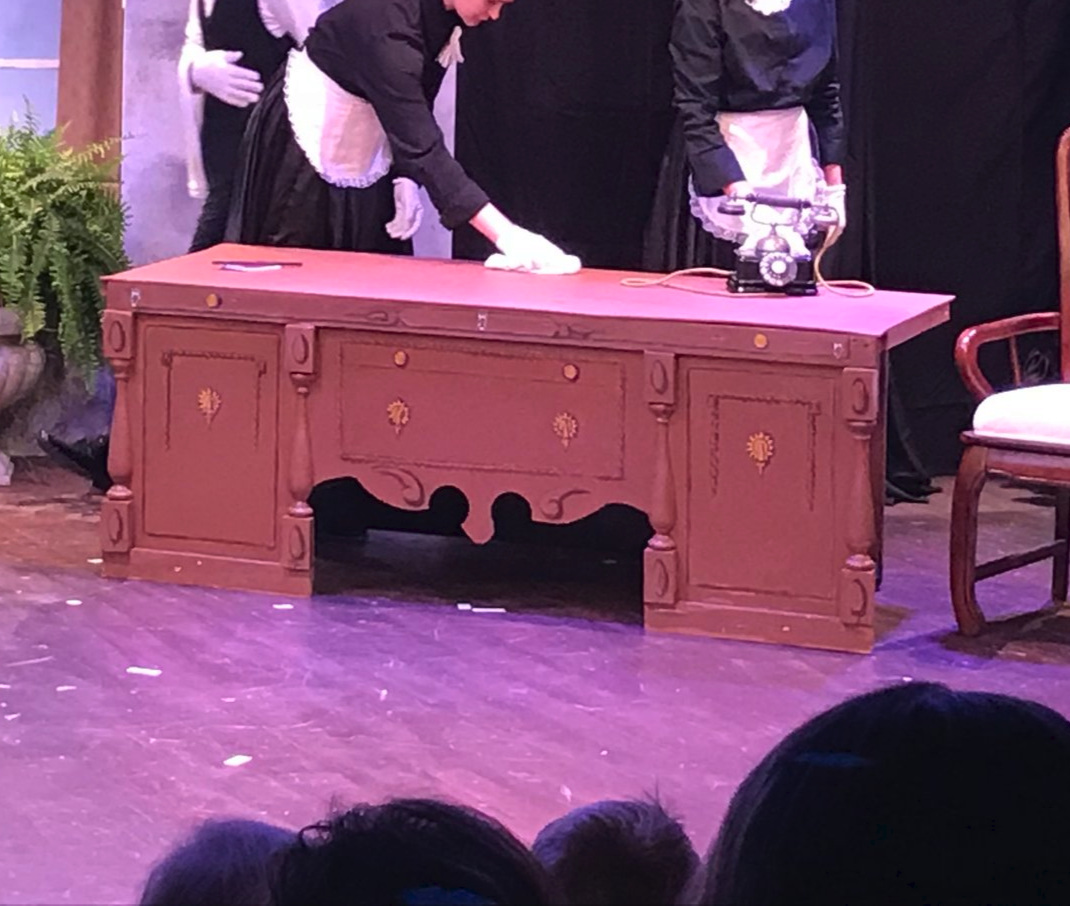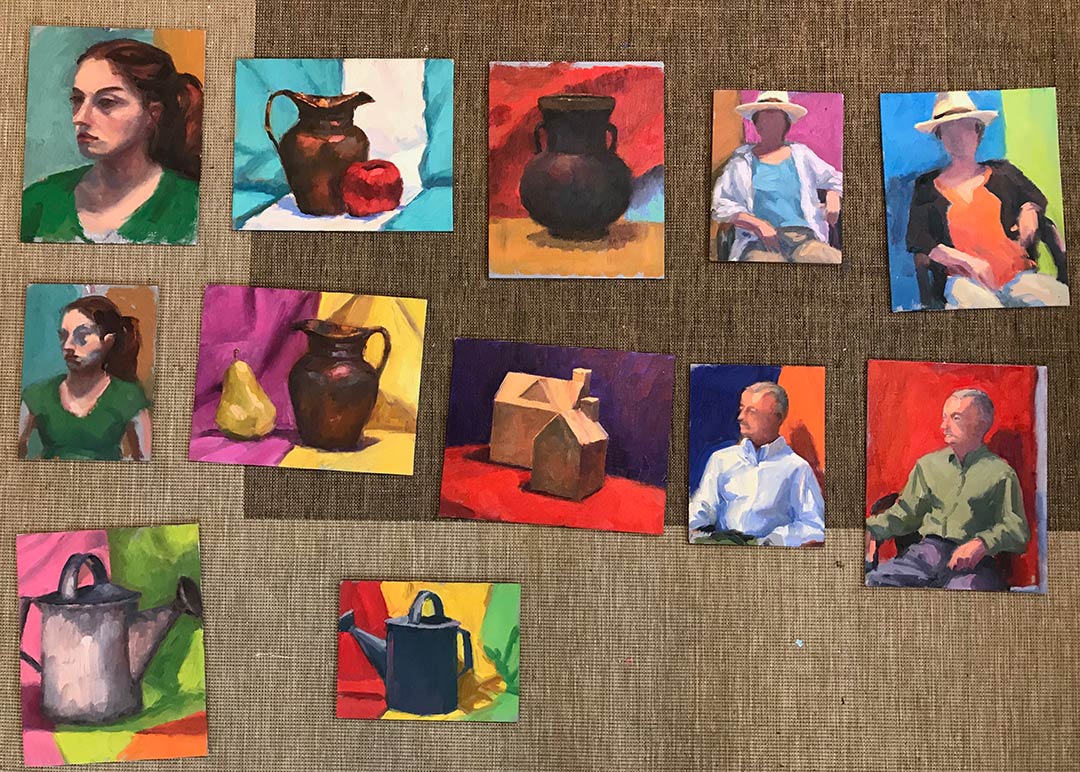The old "Nigerian Scam" - still alive and kicking
/I'm dealing with a sick child , as well as MORE snow and sleet and school closings, so I can report no progress on my Varenna painting today. Instead I'll share an entry I've been kicking around for a few days about selling art online. Enjoy! ****
Having had an online presence since the early days of Al Gore's notorious invention, I have made a number of direct web sales over the years. I've also seen my share of emails that have come to be known as the "Nigerian Scam". This scam is basically a fake purchase inquiry that, if the bait is taken, results in a flim-flam for the artist or online seller (a loss of product, profit, or often, both).
It's called the Nigerian scam because in the beginning, many of these inquiries originated out of Nigeria. Now though, they seem to be popping up all over the world. It's been around a long time, so I hesitate to even write about it. But even though they have been at it for years, it still surprises me that there are artists (and other folks) who fall prey to them. The content of the emails vary somewhat, but they follow basically the same formula. I get these bogus emails fairly frequently, and if you are an artist selling from your website, you have probably seen them too. But in case you haven't caught wind of this scam, here are a few red flags to watch for.
- Sender uses a free email account (like Yahoo, Hotmail, etc.)
- Often they don't identify a specific painting or are vague about which piece interests them. Other times they may cut and paste the title and other info about the painting in question into the email.
- The emails often contain grammatical errors, oddly constructed sentences, no capitalizations, etc.
- They usually want the paintings in a hurry.
- Price is often inconsequential.
- They want to use their own "shipping agent".
- Sometimes they claim to live in the USA but need the artwork for their "new office" "new apartment", etc., located overseas.
- They often want to send a check for larger than the amount of the painting (this is likely so that you can "pay them back" the difference down the road. The only problem is the check is no good to begin with, so if you fall for it you are out of your money and your art.)
- They never want to use PayPal.
Now, I've sold quite a bit of art to clients overseas and I realize that, with the exception of number 8, it is actually possible for a legit buyer to exhibit one or two of the behaviors listed above. But when enough of these red flags appear together in the same email, well, all I can say is, sell at your own risk!
Unfortunately these scams are getting more and more sophisticated, and it is getting harder to determine whether or not an individual is for real. If there is any doubt in my mind, my feeling is it is better to risk a potential loss of business once in a blue moon than suffer a demoralizing loss of my artwork, time and energy. This is of special importance since most of these requests involve shipping the artwork overseas. Once the art leaves my country, it becomes very hard if not impossible to retrieve.
When one of these "red flag" letters comes through my email, I respond politely as I always like to give the fellow the benefit of the doubt. But if there are enough of these flags waving around, I just ask for Paypal. Scammers don't seem to like Paypal and it usually puts them off fairly quickly.
For legitimate clients who are overseas, a good alternative to Paypal (especially for international clients) is wire transfer. Like Paypal, a wire transfer is secure and also faster than sending a check and waiting for it to clear.


